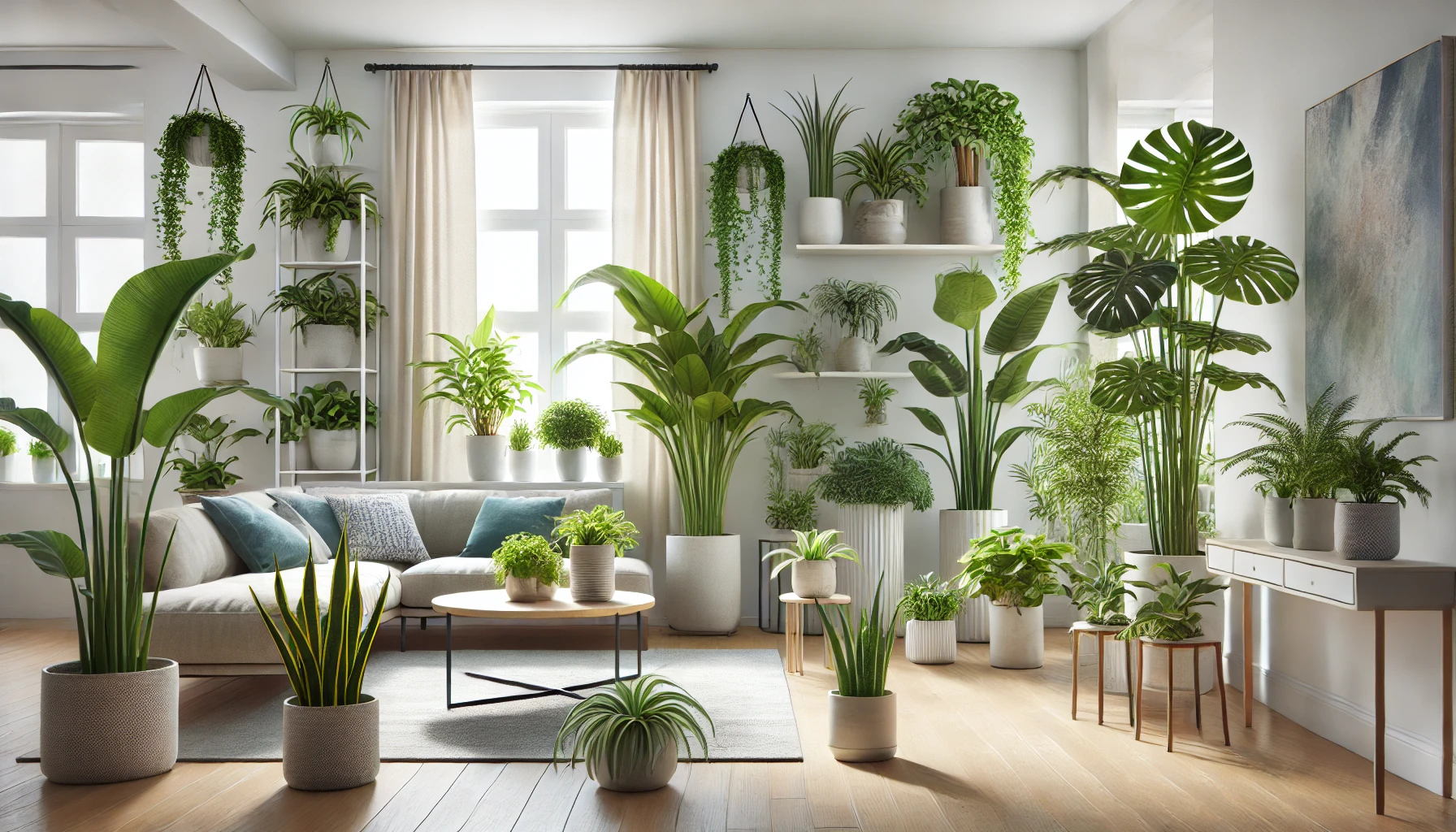In a world where we spend more and more time indoors, the quality of the air we breathe at home matters. While technology offers air purifiers and ventilation systems, nature has provided us with an equally powerful — and much more beautiful — solution: air-purifying plants.
These natural purifiers not only enhance your space with color and texture, but they also help remove toxins, balance humidity, and boost well-being. In this article, we’ll explore the top air-purifying houseplants, how they work, and tips to keep them healthy and effective.
Why Do Plants Purify the Air?
Plants naturally improve air quality through a process called phytoremediation. As they photosynthesize, they absorb carbon dioxide and release oxygen — but that’s not all. Certain plants can also:
- Absorb harmful chemicals like benzene, formaldehyde, xylene, and trichloroethylene
- Trap dust and airborne particles on their leaves
- Increase indoor humidity through transpiration
These benefits were even confirmed by the famous NASA Clean Air Study, which identified plants that significantly reduce airborne toxins in sealed environments.
1. Spider Plant (Chlorophytum comosum)
A favorite among beginners, the spider plant is easy to care for and excellent at purifying the air.
Removes: Carbon monoxide, formaldehyde, xylene
Why it’s great:
- Fast-growing and low-maintenance
- Safe for pets
- Produces baby “pups” that can be propagated easily
Care tips: Bright, indirect light; water when the soil feels dry.
2. Snake Plant (Sansevieria trifasciata)
Also known as mother-in-law’s tongue, the snake plant is a powerhouse of oxygen production — especially at night.
Removes: Benzene, formaldehyde, trichloroethylene
Why it’s great:
- Survives in low light and dry air
- Excellent for bedrooms due to nighttime oxygen release
- Needs very little attention
Care tips: Let soil dry out completely between waterings.
3. Peace Lily (Spathiphyllum)
Known for its striking white blooms, the peace lily also works overtime as an air purifier.
Removes: Ammonia, benzene, formaldehyde, trichloroethylene
Why it’s great:
- Beautiful and functional
- Adds moisture to the air
- Alerts you when it needs water by drooping
Care tips: Keep in low to medium indirect light; water when topsoil feels dry.
Note: Toxic to pets if ingested.
4. Areca Palm (Dypsis lutescens)
The areca palm is not just elegant — it’s a natural humidifier, making it perfect for dry environments.
Removes: Benzene, carbon monoxide, formaldehyde
Why it’s great:
- Tall and lush, perfect for corners
- Adds tropical charm to interiors
- Improves humidity naturally
Care tips: Needs bright, indirect light and regular watering.
5. Rubber Plant (Ficus elastica)
A bold, glossy plant that’s great for removing airborne toxins and looking stylish at the same time.
Removes: Formaldehyde, xylene
Why it’s great:
- Visually striking with minimal effort
- Can grow tall with proper care
- Durable and long-living
Care tips: Water when the soil is dry at the top; prefers bright, indirect light.
6. Aloe Vera
Famous for its soothing gel, aloe vera also purifies the air and removes pollutants from cleaning products.
Removes: Benzene, formaldehyde
Why it’s great:
- Dual-purpose: beauty + first aid
- Very easy to care for
- Compact and perfect for kitchens or bathrooms
Care tips: Needs bright, direct sunlight and infrequent watering.
7. Boston Fern (Nephrolepis exaltata)
A classic air purifier, the Boston fern is especially good at adding moisture to the air.
Removes: Formaldehyde, xylene
Why it’s great:
- Excellent natural humidifier
- Beautiful arching fronds
- Aesthetic and functional
Care tips: Keep soil consistently moist; prefers humidity and indirect light.
8. Pothos (Epipremnum aureum)
Pothos is one of the most forgiving and adaptable houseplants — and it works hard to clean the air.
Removes: Benzene, formaldehyde, toluene
Why it’s great:
- Fast-growing and easy to propagate
- Can be grown in water or soil
- Perfect for shelves and hanging planters
Care tips: Low to bright indirect light; water when soil is dry to the touch.
9. Chinese Evergreen (Aglaonema)
With its patterned leaves and low-light tolerance, this plant adds color and improves air quality.
Removes: Benzene, formaldehyde
Why it’s great:
- Thrives in dimly lit rooms
- Low maintenance
- Long-lasting foliage
Care tips: Water when soil is dry; keep away from drafts.
10. Bamboo Palm (Chamaedorea seifrizii)
Another standout from NASA’s list, the bamboo palm is ideal for homes with filtered light and space to spare.
Removes: Benzene, formaldehyde, trichloroethylene
Why it’s great:
- Grows up to 6 feet indoors
- Boosts moisture levels
- Adds a tropical feel to interiors
Care tips: Keep in bright, indirect light and water regularly.
Tips for Maximizing Air-Purifying Benefits
To make the most of your air-purifying plants:
- Use several plants throughout your home — NASA recommends at least one plant per 100 square feet.
- Wipe leaves regularly to remove dust and keep pores clear.
- Keep plants healthy — only thriving plants can purify effectively.
- Rotate them to ensure even growth and sun exposure.
Bonus tip: Combine multiple varieties for a layered aesthetic and broader purification effect.
Final Thoughts: Breathe Easy, Live Greener
Decorating with air-purifying plants is one of the simplest and most enjoyable ways to upgrade your indoor environment. Not only do they help you breathe cleaner air, but they also add life, color, and serenity to your space.
Whether you’re new to houseplants or expanding your collection, adding a few of these top purifiers is a small step that brings big benefits — for your health, your mood, and your home.
